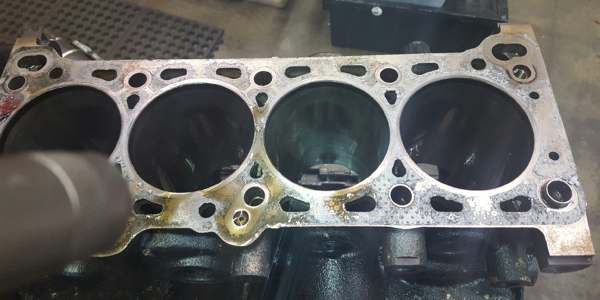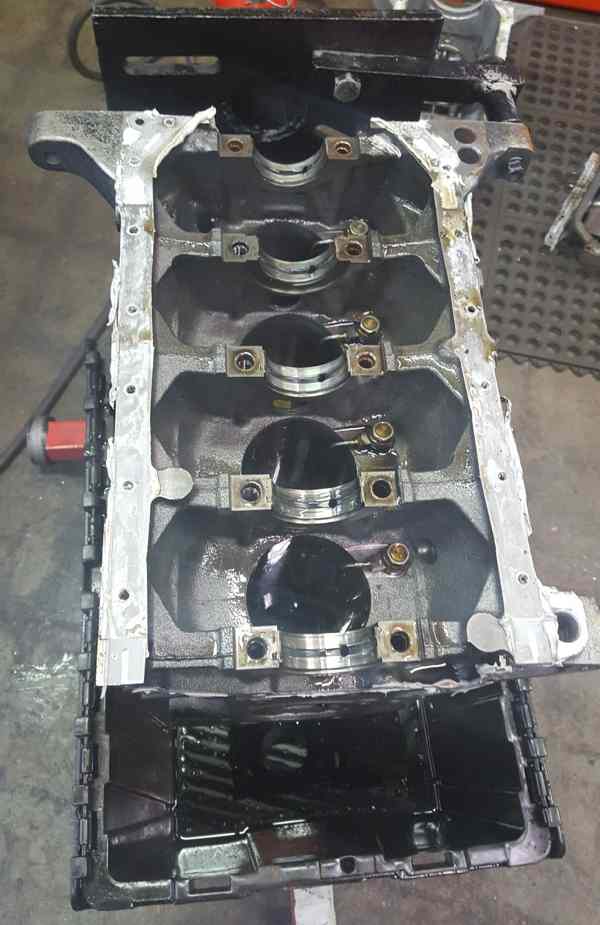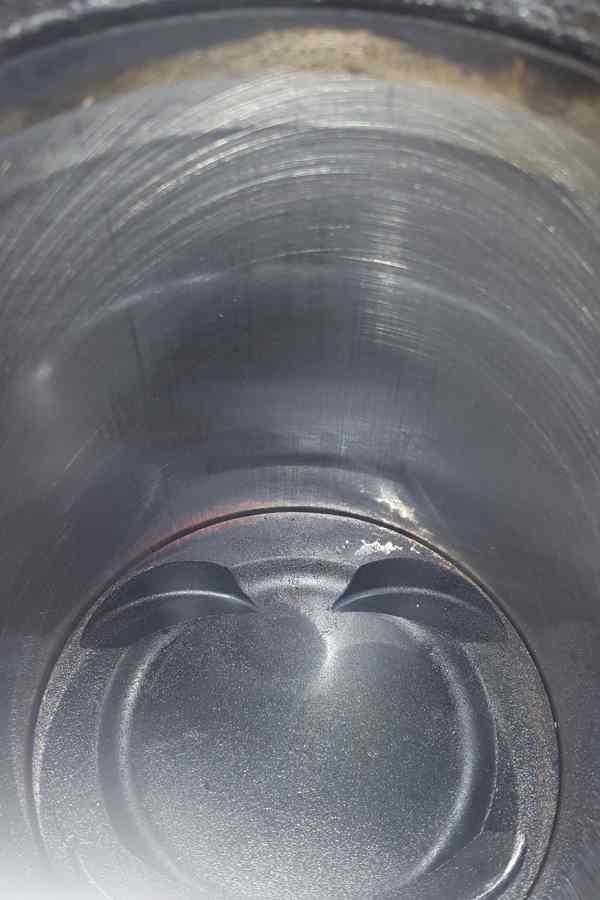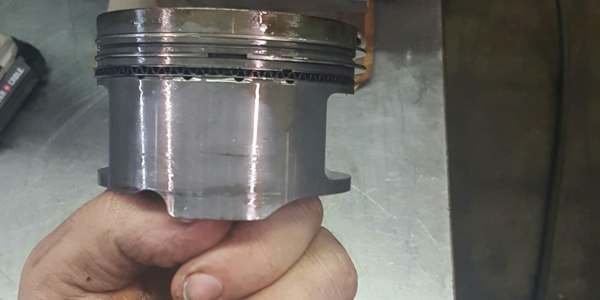Your customers often spend a great deal of their money and your time on their latest attempt at winning a race. Once it leaves your shop, dyno results attached, what’s next? Do you offer a warranty on your race engines?

Of course, everything from tapioca pudding to television sets seem to be guaranteed these days – if you don’t like it you’ll get it free – but when it comes to their cars, drivers are often disappointed to discover what their warranty doesn’t cover rather than what it does.
Due to worries of liability and concerns about what customers may do with them, many engine builders are reluctant to offer warranties on engines even though they are confident in their abilities to build durable power.
For Chris Graham, Race Engineering, Salisbury, NC, if it’s a race engine, it leaves his shop with a warranty.
“It’s not just for pro racers, but even amateur circle track or road course racers or even pro racers, I warranty those. If it’s a track toy, a streetcar or a drag car, I can’t warranty those just because the cost is way too high.”
Now, that being said, admits Graham, he’ll still stand behind the product and if something happens, let me know. “I will help you out. Don’t feel like you’re alone. You have an engine builder in your back pocket because I work for you – but my billable rate is X, if you know what I mean.”
It’s not always easy and Graham says there’s some fine print of course. “But being in the South, it’s kind of the good old boy in me that says, ‘my handshake’s my bond, and I stand behind my products.’ It’s bit me a couple times, and I probably shouldn’t have warranted something, but for the most part, it’s been good business.”

To Graham, it’s not really about engines – it’s about relationships. “That’s where the warranty secret comes in, and that’s why there’s very few of us, as far as engine builders go, who not only will warranty an engine but stand behind it to the point where even if they screw up, I’ll fix it for cost. That’s unheard of in the industry, that I’ll fix something and tell you exactly what it cost me to fix it.”
Playing the blame game isn’t really necessary, Graham says, because, like most engine builders, he can tear a damaged engine down, and pretty quickly understand what happened to it. “We can look at the bearings. We can look at the valves. We can look at the strike of the head, if the piston hits it or if the piston hits a valve. We can say hey, man, you didn’t tell me you zinged the (stuff) out of this!”
Race Engineering specializes in spec Miata engines and although his goal is to build an engine so strong you never have to call him again, Graham knows things will happen.
“Here’s the real trick as far as warranty repairs go. Everybody lies, right?,” he says. “A lot of people lie, and they don’t even know they’re lying. They’re just telling a story, and frankly, they’re terrible witnesses of their own story.”
Graham says, “I’m not going to hold it against you if you get on the rev limiter, especially when you’re going through the gears in the heat of the moment. The issue is the money shift – nine times out of 10, if I get a ‘warranty repair’ back and it’s user error, I can ask him flat out, ‘how bad was the missed shift and when did you do it?’ He may think he caught it, but I can tell he didn’t because of the valves. Twelve of them are bent. That’s the reason it’s down on power – it’s because they’re not sealing up. You have to have these conversations with the drivers.”
Luckily, he continues, the engine answers the questions that his customers just can’t. “I find out exactly what happened, not because they told me but because I can see it,” Graham explains. “Foreign object damage, stretched bolts, a broken rod bolt, a bearing that just doesn’t fit right – weird stuff that does happen that is warranty repair worthy. And then you have the overrev and the overheating, where the head comes back and it’s a W shape, not even a banana. We can see that the spark plugs are all leaned out. They didn’t tune it properly. The list goes on forever.”

Even when something doesn’t qualify as a warranty repair, Graham says he will readily work with the engine owner. “I will fix it – just cover my cost. I make sure that they see a value in there, and help them realize it wasn’t a total loss. Look, we put new bearings, we did rings, and we put a light hone on it because the block wasn’t damaged, and we basically did a small valve job to make sure everything’s sealed up, and you’re good to go, and send them on their way. The bill is significantly less than a refresh, but a refresh is what they really need. New bearings, new rings, make sure the block’s good, seals up, slap some valves and you’re on your way, replace anything that’s bent. If I have to replace damaged parts, the customer pays for them. I’m not there to nickel and dime you and kill you – I’m there to get you racing again and have you as a customer for life”
Graham admits that there’s a risk. “No, I’m not going to make a million dollars if a bunch of engines come back but I can count on both my hands how many engines have come back on warranty repair.”
That goes back to that whole point, he says, that warranty repair is really all about relationships.
“It’s got nothing to do with selling motors. It’s a nice little marketing tool, but if you don’t stand behind your product, nobody’s going to buy anything anyway. If I stand behind my product, I can instantly make sure I’ve got customers for life.”
As most engine builders can attest, Graham says he has customers who have been screwed over before. “And frankly, they’re suspicious but I’m collecting business hand over fist now because that level of customer service seems to be dying in the industry. Increasingly, people are starting to just sell product instead of service.”
Graham says he tells customers up front that, depending on the application (as explained earlier), the engine is covered for a year. “Here’s your receipt, and here is your build document and here’s the date, and I’ll 100% stand behind you, no matter what.”
Graham says he told a potential customer about this procedure and he was amazed. “‘That’s why I want to use you,’ he said. ‘I love the fact that you’ll give me a guarantee, and not just a BS guarantee on horsepower. You’ll actually guarantee a product.’”

Although other engine builders may feel differently, Graham says he will typically only warrany road race motors, but not because he has anything against any other customers. “There are a lot of variabilities, so I never say never, but if a customer admits his goal is to stand on the gas and do burnouts in a street rod, I don’t think ANYONE will guarantee the engine will last!”
Graham admits that he may not get paid for the labor cost to service an engine, whether it’s an installation problem, defective part or user error. He might end up working all night in the shop to swap out an engine so a customer can get back on the track by 8 am. Or he may work with a competitor to satisfy a customer’s demand.
“It may cost me, of course; maybe hundreds of dollars in labor. But it’s worth every penny to keep that relationship intact,” Graham says.
What’s the story in your shop? Do you offer a warranty on your race engines? What does it consist of? A year? Two? Six months? 200 laps? Are there forms or waivers you require customers to sign? Have you been burned by the policy in the past?
Obviously, every case is different and your policy may not work for another engine builder. But determining who is at fault and still managing to soothe a seething customer seems to be a skill worth honing.













